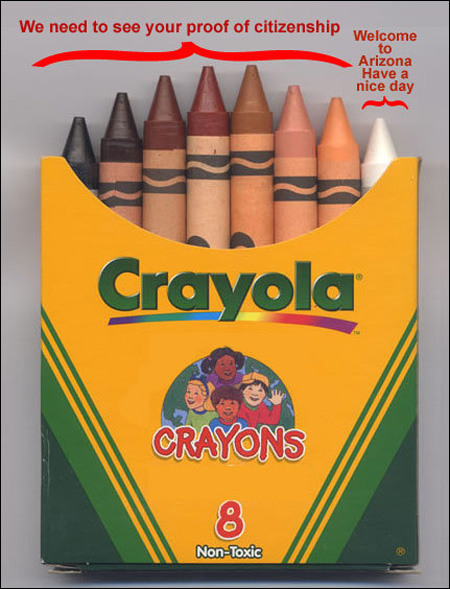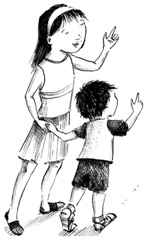new posts in all blogs
Viewing: Blog Posts Tagged with: Asian/Asian American Interest, Most Recent at Top [Help]
Results 1 - 8 of 8
How to use this Page
You are viewing the most recent posts tagged with the words: Asian/Asian American Interest in the JacketFlap blog reader. What is a tag? Think of a tag as a keyword or category label. Tags can both help you find posts on JacketFlap.com as well as provide an easy way for you to "remember" and classify posts for later recall. Try adding a tag yourself by clicking "Add a tag" below a post's header. Scroll down through the list of Recent Posts in the left column and click on a post title that sounds interesting. You can view all posts from a specific blog by clicking the Blog name in the right column, or you can click a 'More Posts from this Blog' link in any individual post.

By:
Miriam,
on 5/14/2010
Blog:
The Open Book
(
Login to Add to MyJacketFlap)
JacketFlap tags:
Language,
Immigration,
Adoption,
Why I Love Librarians,
Educators,
African/African American Interest,
Latino/Hispanic/Mexican Interest,
Diversity Links,
Asian/Asian American Interest,
Add a tag
Before we launch into this week’s roundup of race and diversity links, I’d like to make a plea: help your local library. Many around the country are facing massive budget cuts, so let your elected officials know that your library is important. New Yorkers, NYPL has a handy form to help you contact your City Council member and the mayor, in the hopes of preventing massive service cuts, including closing ten branches and limiting the library to four open days per week.
Now, to diversity!
White people adopting children of color is discussed relatively often, but Charles Mudede looks at the other side: what it says when a black person adopts a white child.
The New York Times brings us a great story about Chinese teachers coming to the United States, and learning as much about the U.S. as they teach about China.
The Supreme Court is, of course, big news lately. ColorLines brings us a Fantasy Supreme Court, nine passionate legal scholars who happen to be a picture of diversity, and many of whom have worked on race issues. And according to a recent poll, the public overwhelmingly says that a nominee being black, female, protestant, or gay is not a factor.
That’s clearly progress, but what about Arizona? It just passed a law banning ethnic studies classes, (wrongly) claiming that courses focusing on, say, Latino authors foster resentment. And, of course, we can’t forget its recent immigration law, cleverly illustrated with Crayola’s multicultural crayons by Angry Asian Man:

Filed under:
Diversity Links Tagged:
Adoption,
African/African American Interest,
Asian/Asian American Interest,
Educators,
Immigration,
Language,
Latino/Hispanic/Mexican Interest,
Why I Love Librarians 

 0 Comments on This Week in Diversity: Arizona, the Supreme Court, and Crayons as of 1/1/1900
0 Comments on This Week in Diversity: Arizona, the Supreme Court, and Crayons as of 1/1/1900
An Indian woman and feminist shares three encounters with women who are working for women’s rights and for peace within their traditions. It’s long, but it’s worth it:
All too often, I think we forget the balance of which she speaks. In one conversation, we talk about how tradition binds communities, provides a sense of self and of shared heritage, and is something worth preserving. In another conversation, we talk about how tradition all too often treats women as second-class. They can be one conversation.
Filed under:
Diversity Videos Tagged:
Asian/Asian American Interest,
diversity,
sexism,
South Asian Interest,
videos,
Women/Girls 





Author Chang-Rae Lee speaks about what box he’s going to check on his census, and how little it says about him:
Most interesting to me is his comments on the white box as opposed to the many Asian boxes. There are eleven subcategories of Asian, including two fill-in options. The American Indian/Alaska Native box comes with a fill-in to list your tribe. Black and white, however, only get one box each. It doesn’t differentiate between Black people of Caribbean, Sub-Saharan African, Northern African, or “descended from slaves” heritages. It doesn’t differentiate between WASPs, Ashkenazim, Scandinavians, or Irish.
Maybe it has to do with the assumption of privilege. White people are assumed to be privileged and black people are assumed to be disadvantaged; that assumption wipes away all internal distinctions. Asian Americans aren’t painted in such broad strokes, which allows a greater level of distinction to take place. But, as Chang-rae Lee says, even that doesn’t tell us much.
Filed under:
Diversity Videos Tagged:
Asian/Asian American Interest,
Census 





Spring is has reached New York! Here’s your weekly dose of links to ponder as you sit and bask in the sun.
Following up on last week’s links dealing with interracial writing in the speculative fiction community is Nisi Shawl, who hits home with a description of a panel on writing and racial identity at a recent convention: “Our fourth panelist had been raised as an American Indian and spent her life knowing absolutely that this was who and what she was. Then she discovered through genetic testing that her biological heritage is a mix European and Sub-Saharan African. No American Indian.” Fascinating stuff!
Color Online is also looking at racial identity and books, with a focus on reviewing. They ask if we review books by members of our own race of ethnicity differently than we review others. They have some pretty interesting responses in the comments thread, so take a read.
An article from Single Women Rule raises these issues as it discusses murals by a Latina artist that some people claim are demeaning to Black and Latina women. The artist’s agent is quoted as saying, “Sofia is Puerto Rican, maybe it would be a problem if the artist was White American, but she is Puerto Rican, from San Juan and lives in Bed-Stuy.” Does that make a difference?
Lastly, Engrish.com brings us some entertaining Chinese-to-English mistranslations:

As I general rule, I try to avoid eating furniture. Can anyone who reads Chinese give us a more accurate translation?
Filed under:
Diversity Links Tagged:
African/African American Interest,
Asian/Asian American Interest,
Latino/Hispanic/Mexican Interest,
Race issues 





2 Comments on
This Week in Diversity:, last added: 3/22/2010







 2 Comments on This Week in Diversity:, last added: 3/22/2010
2 Comments on This Week in Diversity:, last added: 3/22/2010 White Americans tend to raise children in nuclear families—just parents and kids—but in many cultures and many immigrant groups, extended families are deeply involved.
White Americans tend to raise children in nuclear families—just parents and kids—but in many cultures and many immigrant groups, extended families are deeply involved. 



Creating works that perpetuate historically demeaning images and perceptions of black and Latina woman is doubly irresponsible when the offender is of black or Latina descent.
Black and Latina women suffer from a dearth of positive and inspiring images in the media. We can pretend like we are not influenced by media representations, but images like the one presented in this mural contribute to the damage of women’s self-esteem.
The artist appears to not understand the historical weight and context of displaying objectionable imagery in a very public and international space.
Melissa, I agree. I feel the problem lies in the lack of historical research. Just because someone is of a certain ethnic background doesn’t make them a cultural expert on their race. If anything, being a person of color *should* make you more sensitive toward visual or written interpretations related to race and how they will be perceived.